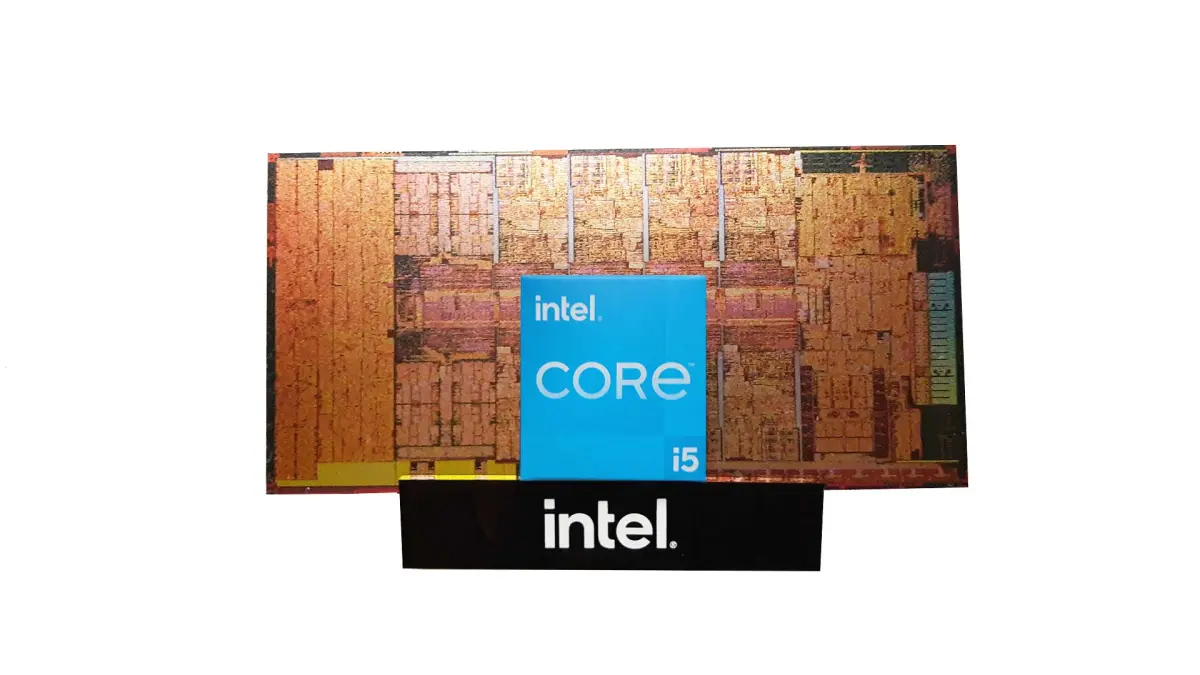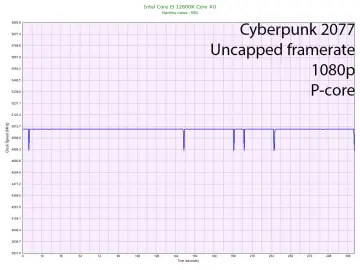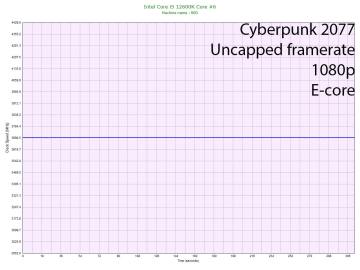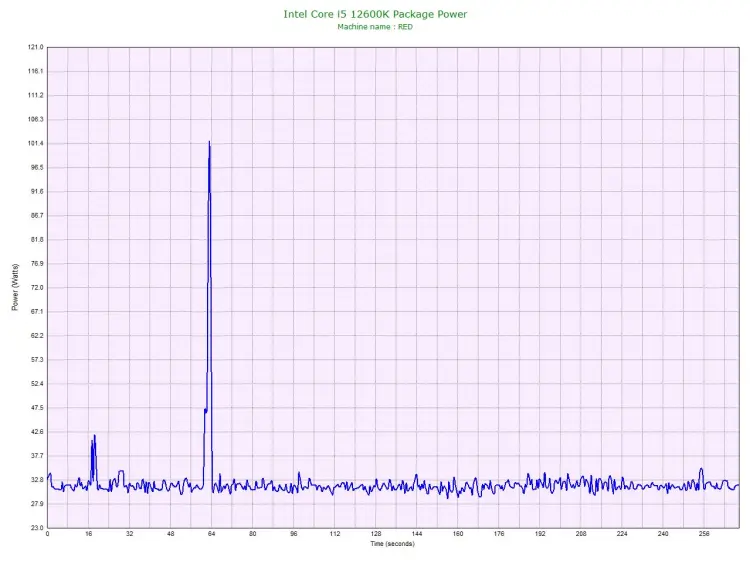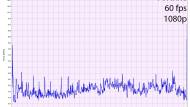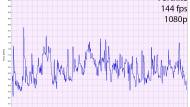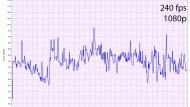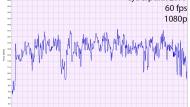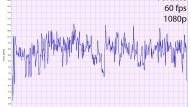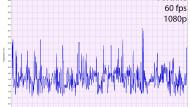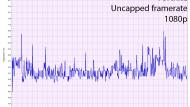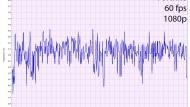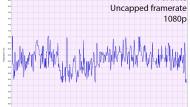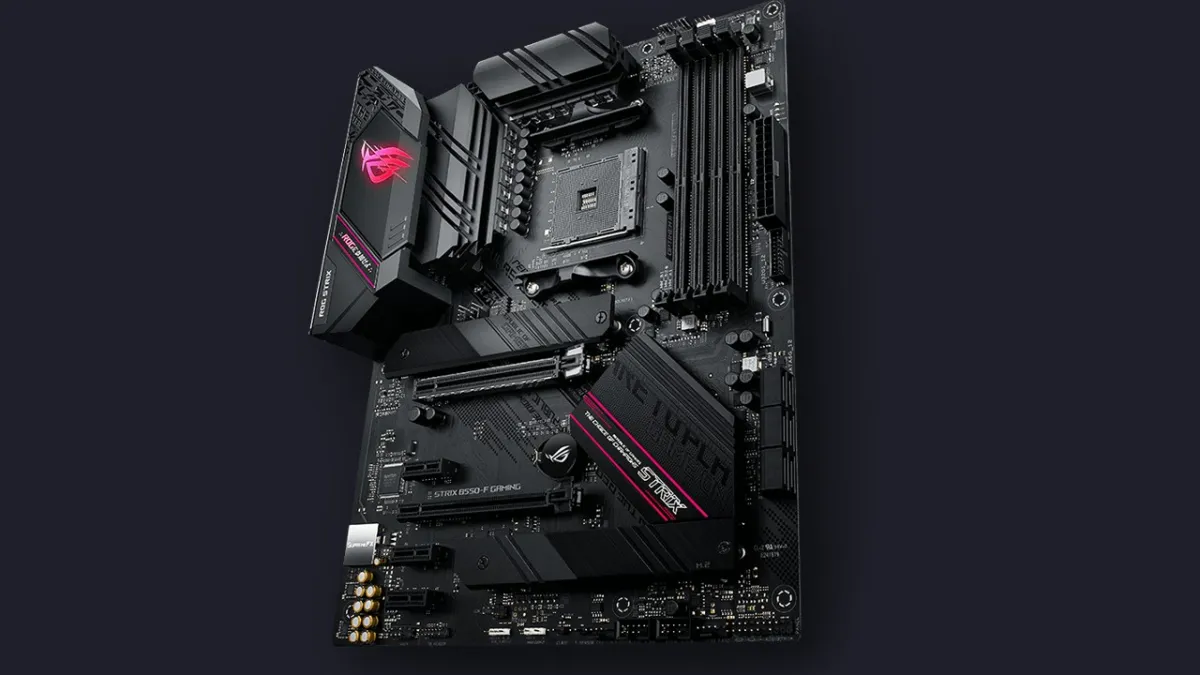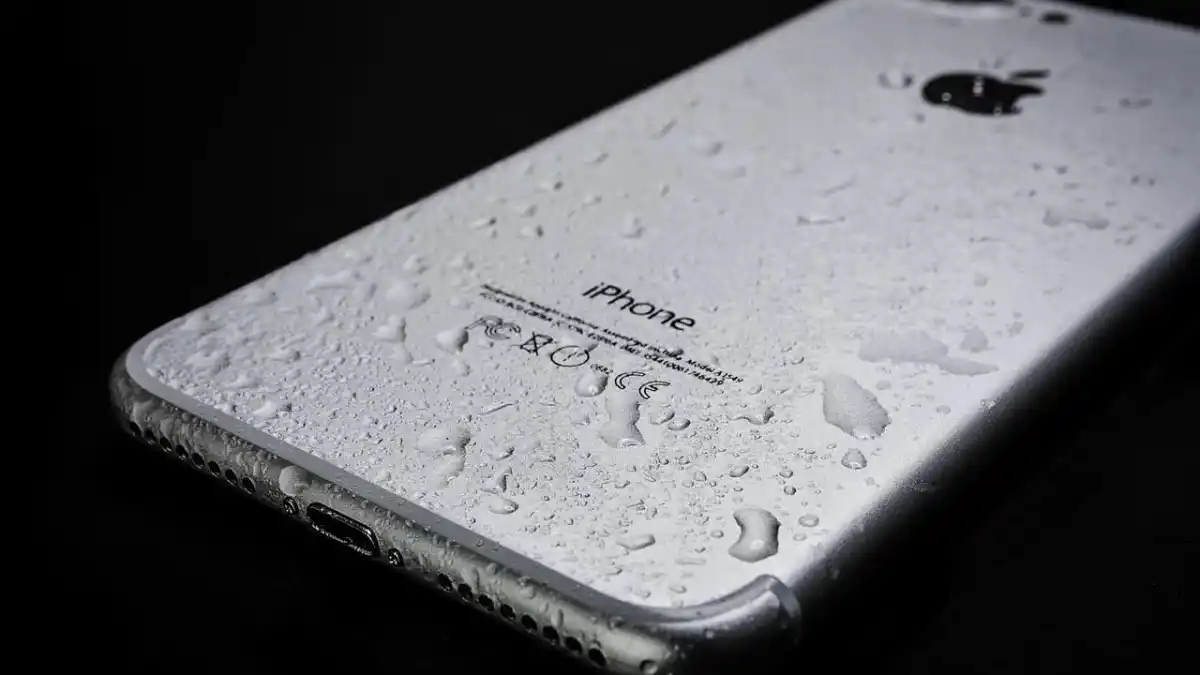Frequencies
For the past several generations, high frequencies have been a major marketing point for Intel CPUs. These high frequencies traditionally translate to better gaming performance, though this isn’t always the case since IPC, cache, core counts, and other things improve framerates in games as well. For the 12th generation, Intel raised the bar in these other categories while also maintaining the same high frequencies seen on Rocket Lake. Intel advertises the 12600K as a CPU capable of boosting up to 4.9GHz on its P-cores and 3.6GHz on its E-cores.
We used Cyberpunk 2077 with uncapped framerates in 1080p on low settings with DLSS Ultra Performance mode enabled (to reduce GPU bottlenecking) to perform some basic gaming stress tests on the 12600K. We chose this heavy hitter to maximize power draw for the CPU and consider this test to be an extreme scenario for this particular title. The game averaged 121 fps under these conditions and CPU usage reached 71%. We allowed the game to run for 10 minutes and heat up the processor before capturing data and then recorded roughly six minutes of frequency behaviors for both the P-cores and E-cores. For cooling, we used the Corsair Elite LCD 240mm liquid cooler designed for Alder Lake.
Under these test conditions, the 12600K yielded clocks speeds that generally held up at 4.98GHz on all P-cores, though there were some brief dips to 4.8GHz. On P-cores #0-2, our 12600K managed to briefly hit 5.29GHz before throttling set in. The E-cores delivered above expectations with sustained frequencies of 3.7GHz. As a reminder, this was achieved with all power limitations unlocked and by enabling the AI OC feature built into the ASUS ROG Strix-E Z690 motherboard BIOS.
Overall, Intel managed stable frequencies and impressive performance that’s consistent with marketing. This i5 didn’t exhibit nearly the overclocking potential we observed with the i9 model, but it’s hard to argue with the performance for the price and lower TDP. It’s also entirely possible the i9 is just a higher quality piece of silicon. Regardless, this CPU operates slightly above the advertised specifications.
Power consumption
The previous 11th generation of desktop processors from Intel are infamous for high power consumption under certain use conditions. While this was somewhat true in our experience with the 11700K, we generally found that gaming does not result in power consumption anywhere near the TDP limits. These instances of high power consumption are more associated with multi-threaded workload applications, such as rendering. For gaming, Intel processors typically exhibit power spikes when game engines are loading, but power consumption tends to trend downward for normal gameplay.
Before we get to the game data, here is what to expect out of the 12600K at idle on Windows 11. The processor averaged roughly 32W with all power consumption preferences set to maximum. As is shown below, power consumption did spike significantly during our test. We tracked this down to the anti-malware executable built into Windows, but still felt it important to include.
Idle power consumption can be reduced to a mere 5.19W average with the default Windows Power Saver plan. Under this power plan, the 12600K retained a reasonable degree of system responsiveness and averaged 9.88W while in use for simple work tasks like typing and photo editing. Even Adobe Photoshop was generally responsive and usable for basic photo editing.
Gaming power consumption
While the i9 can be a bit of a power hog this generation as well, we found that the i5-12600K is very efficient in gaming overall. As such, we never had an issue cooling the CPU with the 240mm radiator. Intel processors can still exhibit large power spikes, but these are brief and often characteristic of high standard deviations from the mean power consumption values. As we’ll show, the 12600K can run games at a range of popular framerates well below the 150W Max TDP. In fact, we never even came close to the Max TDP until we started our multi-tasking tests with uncapped framerates enabled.
Games are anything but consistent workloads. As such, we use graphs that show the behavior of the 12600K over time. First up is Cyberpunk 2077, which we chose due to it being an intensive, dense, open-world title that’s built on the DirectX 12 API. Refer to our gaming performance section for the exact settings and locations used. For Cyberpunk 2077, we performed two runs, one locked at 60 fps, and the other with uncapped framerates to let the 12600K consume more power.
Cyberpunk 2077: (The uncapped framerate was a 121 fps average for reference).
Cyberpunk 2077 is a game that’s known to take advantage of up to eight cores, which explains why the i5 performed significantly worse than the i9-12900K. Six cores is still sufficient for making the game playable at higher refresh rates, but there is a clear performance difference. The i9 managed about 40 more average fps on the same test system, however, the 12600K performs well while using far less power. At 60 fps, the CPU drew between 85-100W on average. During gameplay with uncapped framerates, it only drew 115-120W on average. This shows how efficient Alder Lake can be at slightly lower clock speeds and with fewer cores. We are highly impressed with the CPU in this regard.
We’ve also included some additional games to give you a general idea of how much power the 12900K draws. These include Fortnite and Borderlands 3. For additional context, we tested at locked framerates based upon the popular framerates of 60, 144, and 240.
Fortnite:
Borderlands 3: (Our GPU could not complete the 240 fps test, so results are omitted).
Gaming and multi-tasking power consumption
What if you like to run more programs alongside your games, though? Perhaps you like to stream, record gameplay, use social apps, run peripherals with high polling rates, and more while playing your games. To push the 12900K to the power usage to the max, we also performed the same power measurements tests with some additional applications going in what we call our “multi-tasking test.” For this test, we run Chrome, Slack, Discord, Photoshop, the Epic Games Store, Steam, Origin, GeForce Experience Instant Replay, OBS Studio recording at 1080p with quality settings, and iCUE with Axon hyper-polling in use and set to 4,000Hz for both the mouse and keyboard.
This is a bloated test and obviously not recommended if your goal is to maximize framerates while, say, streaming a game to something like Twitch. But it is interesting to see how much power can be used for gaming-related purposes. We’ve included results from the same three games (Cyberpunk 2077, Fortnite, and Borderlands 3) for comparison. (For more information on test conditions, refer to the “gaming performance and multi-tasking” section in this review).
For the multi-tasking power consumption tests, we used 60 fps as a basis and additionally tested at uncapped framerates to maximize power draw and also give high-refresh enthusiasts a better idea of what to expect.
Cyberpunk 2077: (The uncapped framerate was a 110 fps average for reference).
Fortnite: (The uncapped framerate was a 262 fps average for reference).
Borderlands 3: (The uncapped framerate was a 153 fps average for reference).
As we can see from these tests, the 12600K will indeed draw the full 150W and is something you should expect if streaming hardware-intense games at high framerates while streaming/capturing gameplay, etc. However, there are cases where it won’t get nearly that high even when you’re demanding multi-tasking and high refresh gaming performance. It’s also important to note that our 12600K featured a slight overclock during tests, and the peak power consumption actually reached 156.9W for a moment when testing Cyberpunk 2077. Most users can expect to see power draw peak to 90-110W during 144Hz high refresh gaming though.
Temperatures
The importance of a good cooling setup cannot be understated for those interested in achieving maximum framerates. A competent air cooler should be adequate to cool the 12600K, but those interested in pushing it to limit may want to consider a closed liquid cooler. In our own tests, we found that temperatures never exceeded 80C with this configuration, and average temperatures during gameplay with uncapped framerates regularly remained below 74C, even when pushing the CPU.
We tested two games at two different framerate settings for two total rounds of testing to gather our thermal results. We selected Cyberpunk 2077 as the heavyweight title and Fortnite as a lightweight alternative. Just like in our power consumption tests, we tested each game at locked 60 fps and again with uncapped framerates. Each game was benchmarked under standard gaming conditions, and then again under our multi-tasking conditions that drew more power and generated more heat.
Here’s a basic rundown of our testing conditions. The 240mm Corsair Elite LCD cooler was set to the default Balanced fan curves and water pump speed profile. Ambient temperatures were at 69F (21C). We applied Thermal Grizzly Kryonaut thermal paste to the CPU. More information about how exactly we test the games can be found in the gaming performance section. You can refer to the first page of the review for more information about the hardware.
Gaming temperatures
Here’s how the 12600K performed while just gaming.
Cyberpunk 2077: (The uncapped framerate was a 121 fps average for reference).
Fortnite: (The uncapped framerate was a 306 fps average for reference).
Gaming and multi-tasking temperatures
Here’s how the 12600K temperatures stand up to gaming while under additional load from other applications. We performed our same multi-tasking test described in the power consumption section to gather the data.
Cyberpunk 2077: (The uncapped framerate was a 110 fps average for reference).
Fortnite: (The uncapped framerate was a 262 fps average for reference).

